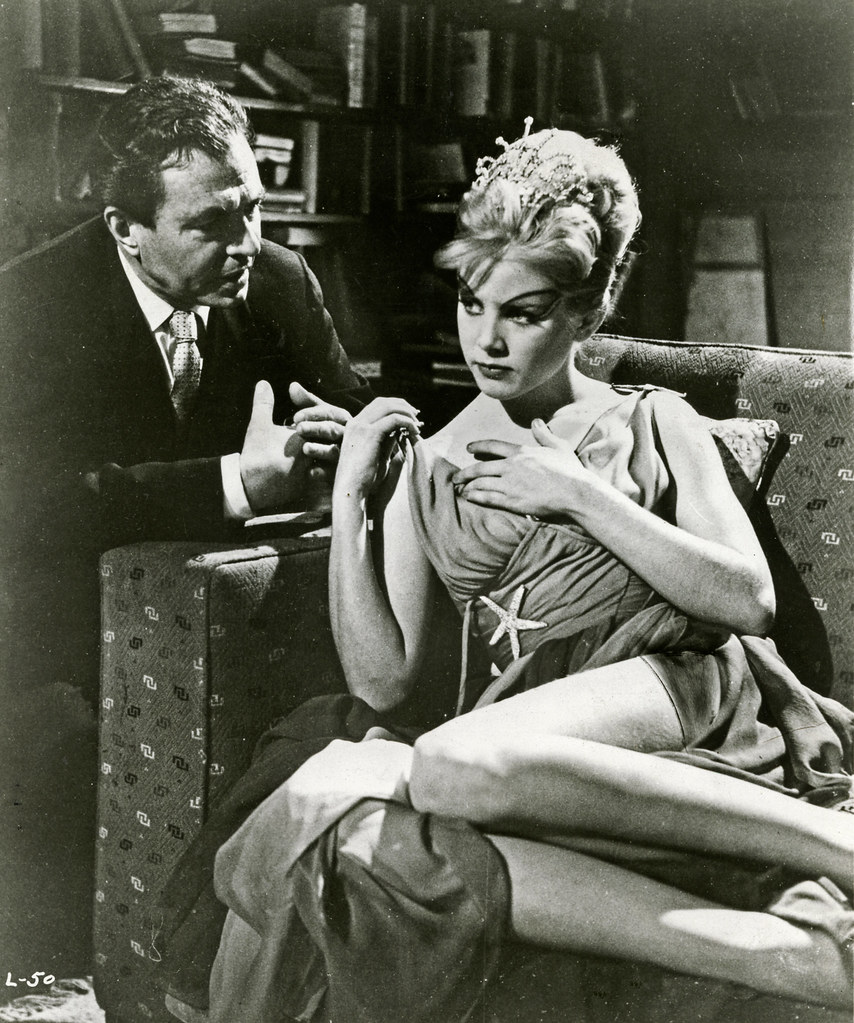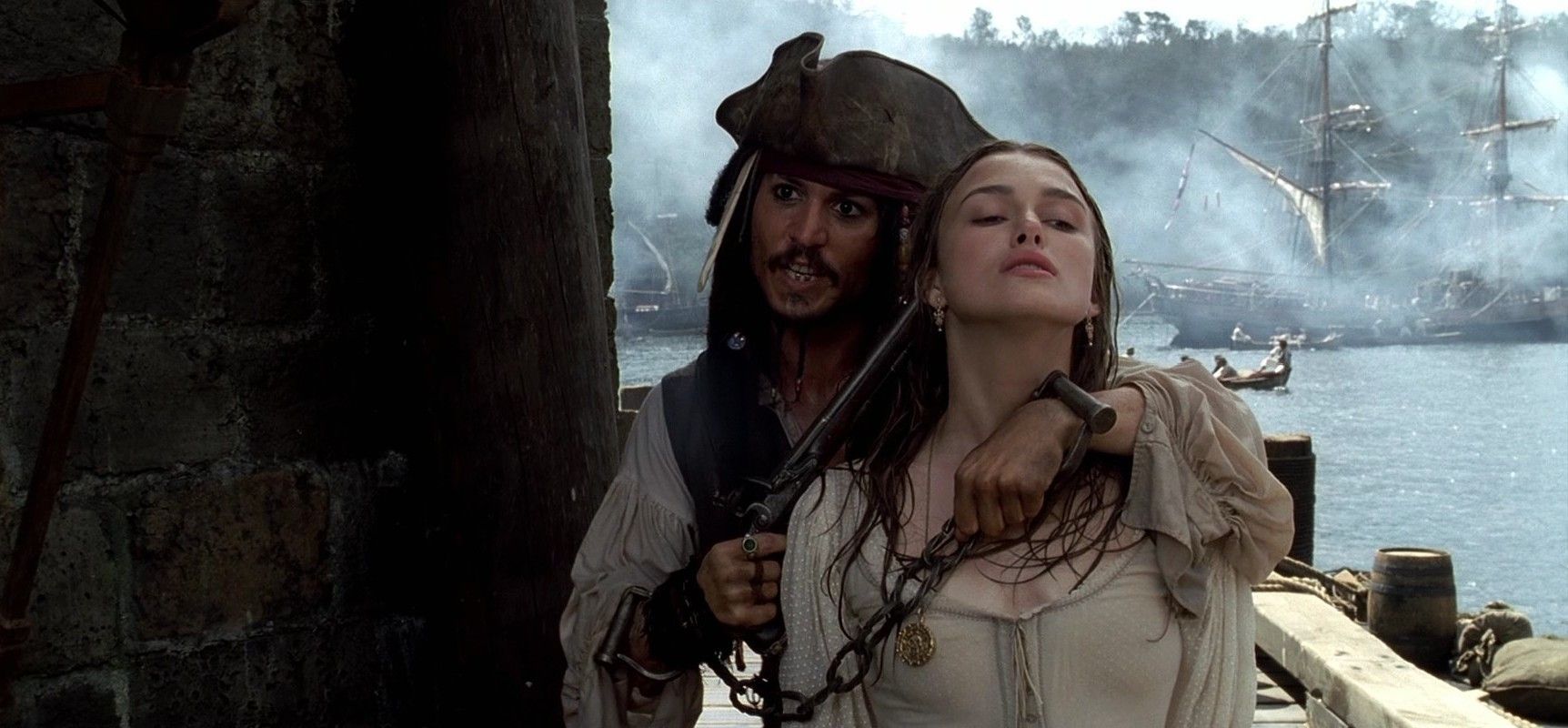
The bikini. Just the word itself conjures a splash of summer, a flash of cinematic allure, a cultural touchstone that has, for decades, been far more than mere swimwear. It’s been a canvas for societal shifts, a symbol of liberation, and an undeniable force in the annals of pop culture and film history. Far from being relegated to simple beachside eye candy, the bikini in cinema has consistently served as a potent narrative device, a character-defining statement, and even a catalyst for widespread conversation. It’s a tiny garment that packs a monumental punch, both on screen and off.
Indeed, while many might dismiss “bikini-themed flicks” as nothing more than frothy excuses for scantily clad actors, a deeper dive reveals a surprising and often incisive depth. These aren’t just movies *with* bikinis; these are films where the two-piece plays a pivotal, frequently groundbreaking, role in shaping the scene, the character’s persona, or even the overarching zeitgeist itself. They’ve consistently transcended their initial beach-trope settings to become indelible cultural markers, sparking trends, challenging conventional norms, and cementing certain stars as cinematic legends, often in just a few frames.
From the primal scream of prehistory to the pulsating rhythms of a vampire-infested dive bar, we’re about to peel back the layers – and the fabric – on some of the most iconic bikini moments ever committed to celluloid. These are the flicks where the swimwear wasn’t merely an afterthought or a costume department’s easy choice, but an integral part of their enduring legacy, proving that sometimes, in the right hands and on the right star, less truly is more, especially when it comes to unforgettable cinematic impact. Prepare to have your perceptions of a little bit of fabric and a whole lot of screen presence completely redefined.

1. **Halle Berry in Die Another Day (2002)**It takes a lot to steal a scene from James Bond, the ultimate cinematic alpha, but Halle Berry, as NSA agent Jinx Johnson, did exactly that with an entrance so spectacularly conceived it instantly carved its place into Bond lore. Emerging from the crystalline waters of the Cuban coast in a perfectly-cut orange bikini, she delivered a powerful, intentional homage to Ursula Andress’s groundbreaking *Dr. No* moment, yet infused it with a distinctly 21st-century swagger and formidable independence. This wasn’t just a simple nod; it was a bold redefinition, a passing of the torch with a modern, fiery twist.
Berry’s emergence from the sea, effortlessly carrying a knife and exuding an air of cool competence, was more than just a beautiful woman on a picturesque beach; it was a potent statement. The vibrant orange bikini, audacious and impeccably tailored, perfectly encapsulated Jinx’s formidable, self-assured spirit. She was clearly no mere damsel in distress or a fleeting love interest; she was a Bond girl who could confidently go toe-to-toe with 007, showcasing a physique that had previously “earned her a spot in the Miss World pageant of 1986,” as the context aptly highlights. This single scene cemented her status as a modern action hero: stylish, strong, and utterly in command.
The moment transcended the typical “Bond girl in bikini” trope by imbuing Jinx with undeniable agency and a commanding presence that extended far beyond pure aesthetics. It highlighted her as a force to be reckoned with from her very first frame, a confident and capable operative whose allure was backed by genuine power. Vogue even singled it out as one of the “best pool- or beach-side movie moments to dive into,” praising her “perfectly-cut orange bikini” and her undeniable portrayal of a “femme fatale.” It remains a quintessential classic, expertly re-imagined for a new, discerning generation of cinematic connoisseurs.
Read more about: Polly Holliday, Iconic ‘Alice’ Sitcom Star and Tony-Nominated Stage Actress, Dies at 88: A Retrospective on Her Enduring Legacy

2. **Bo Derek in 10 (1979)**Long before the endless scroll of social media feeds and fleeting TikTok virality, there was a single image that captivated a generation: Bo Derek in Blake Edwards’s 1979 romantic comedy *10*. Her scene didn’t just make waves; it practically conjured a cinematic tsunami that reshaped pop culture’s perception of beach glamour. The enduring image of Derek “running on the beach with braided hair caused a major stir,” and frankly, that’s an understatement for its profound cultural impact. It became an instant, indelible icon of effortless beauty and alluring cinematic presence, establishing a benchmark for an entire era’s ideal of sun-drenched, beachside sophistication.
The impact of this single visual was so profound that it virtually became synonymous with the film itself, often eclipsing much of its actual plot and thematic nuances. Derek, with her impossibly bronzed skin, distinct cornrows, and a beige one-piece swimsuit that was minimalist yet utterly captivating, redefined sex appeal for the late ’70s and early ’80s. She was the ethereal “10” – the quintessential perfect woman – and her graceful, almost ethereal beach run encapsulated an aspirational, sun-soaked fantasy that audiences across the globe simply couldn’t get enough of, propelling her to instant superstardom.
What’s often understated or completely overlooked in the casual recollection of the scene is its subtle underlying commentary on male obsession and the elusive, often unrealistic, nature of perceived perfection. While she was undoubtedly stunning, Derek’s character, Jenny, was also a projection of a man’s idealized desires, an unattainable fantasy. The scene, therefore, transcended the bounds of simple eye candy by becoming a visual shorthand for an entire cultural phenomenon, a moment so indelible that it spurred direct homages decades later. This lasting power proved its significance far beyond a fleeting fashion trend.
Read more about: Unseen Moments with Bond Girl 001: 12 Electrifying Behind-the-Scenes Images of Ursula Andress on the Set of Dr. No

3. **Phoebe Cates in Fast Times at Ridgemont High (1982)**If any single cinematic moment can be unreservedly credited with defining ’80s teen sensuality, it is undoubtedly Phoebe Cates’s iconic slow-motion pool exit in Amy Heckerling’s seminal coming-of-age film, *Fast Times at Ridgemont High*. The film itself holds a revered place in the canon of teen cinema, but “one of the iconic swimsuit scenes from the ’80s” — featuring Cates, as Linda Barrett, gracefully stepping out of a pool in a striking red bikini — “instantly burns into the collective memory of pop culture aficionados.” This wasn’t merely a scene; it was a generational rite of passage, an unforgettable aesthetic and emotional touchstone.
Cates, through her portrayal of Linda, effortlessly emerged as “the quintessential ’80s bombshell,” embodying a captivating blend of “girl-next-door charm and undeniable allure.” The fiery red two-piece wasn’t just a simple piece of swimwear; it rapidly ascended to become “an unforgettable emblem of ’80s cinema sensuality,” a vibrant, daring statement in its own right. It was a moment of pure, unadulterated teenage fantasy, perfectly encapsulated by the stark simplicity of the bikini and Cates’s magnetic, captivating presence, solidifying her place in movie history as a defining figure of the era.
This particular sequence transcended a basic “beach trope” by becoming a deeply ingrained cultural touchstone for an entire generation, a visual shorthand for youthful desire and burgeoning sexuality. It masterfully captured the innocent yet powerfully emerging sensuality of adolescence with an artful blend of charm, vulnerability, and undeniable boldness. The scene’s profound influence extended far beyond the box office, successfully “setting the standard for teen movie seductresses for years to come” and unequivocally proving that sometimes, a single red bikini can carry the weighty cultural resonance of an entire decade’s awakening. Indeed, as Vogue accurately attests, it remains a “sizzling piece of pop culture.”
Read more about: You Won’t Believe the Star Power Hiding in These 14 Movies We Totally Underestimated at the Time!

4. **Raquel Welch in One Million Years BC (1966)**Who could have possibly imagined that prehistoric times would be such a hotbed of groundbreaking fashion? Raquel Welch’s absolutely iconic appearance in the 1966 fantasy adventure film *One Million Years BC* didn’t just put her firmly on the global cinematic map; it practically necessitated a complete redraw of the map for cinematic sex symbols everywhere. Her now-legendary fur-lined “bikini” — if one can even call a few strategically placed pelts a conventional bikini — became, without hyperbole, one of the most instantly recognizable and imitated costumes in the sprawling history of film, unequivocally proving that even “cavewomen knew how to make a damned fine bikini.”
The film itself might, at its heart, be a gloriously campy B-movie creature feature filled with stop-motion dinosaurs, but Welch’s powerful portrayal of Loana, the “fair-skinned cave girl,” transformed it into something far more profoundly memorable and culturally significant. The raw, captivating image of her fierce, yet undeniably alluring, presence in that primal two-piece transcended the film’s modest ambitions. It catapulted Welch to stratospheric global stardom and quickly became a powerful, almost elemental, symbol of raw, untamed femininity, a striking and refreshing contrast to the often more demure and confined figures prevalent in early 1960s cinema.
This particular “bikini” moment transcended any typical fashion or beachwear trope by masterfully juxtaposing the stark brutality of an ancient, unforgiving world with an almost impossibly refined allure. It was less about casual sunbathing on a beach and infinitely more about primal survival and powerful self-possession, yet it managed to be undeniably and uniquely sensual. The sheer audacity and imaginative construction of the costume, especially within the context of a period piece, made it a truly groundbreaking visual statement. As the context playfully observes, “Today the bikini would be made from faux fur, not real,” highlighting how even its material has evolved in cultural consciousness, but its indelible impact remains utterly unchanged, a testament to its enduring power.
5. **Brigitte Bardot in The Lighthouse Keeper’s Daughter (1952)**To truly grasp the seismic, groundbreaking nature of the bikini’s ascent, one must invariably look to the radiant and revolutionary figure of Brigitte Bardot. While she was already a burgeoning star, her appearances in early films, particularly in productions like *The Lighthouse Keeper’s Daughter* (though the broader impact is often tied to *Manina, The Girl in the Bikini* for directly igniting the bikini’s explosion), are inextricably linked to a crucial cultural metamorphosis. The context unequivocally states that “The rise in popularity of the bikini is credited to the French sex kitten in this movie,” underscoring that this wasn’t merely a new costume; it was, in essence, a cultural bomb, detonating against the staid sensibilities of the post-war era.
Prior to Bardot’s fearless embrace, the bikini was largely considered an incredibly scandalous garment, struggling for widespread acceptance in a conservative global landscape. Her audacious willingness to wear it on screen, embodying a natural, uninhibited sensuality and a captivating joie de vivre, was instrumental in normalizing its presence. She transformed it from a controversial item into a legitimate, even aspirational, fashion statement. Bardot radiated an effortless chic and a liberated spirit that made the two-piece seem not just acceptable, but utterly desirable, thereby catapulting it directly into mainstream fashion and firmly establishing her as an international icon of modern female liberation and captivating allure.
Bardot’s profound impact extended far beyond the confines of the cinema screen or the pages of fashion magazines. Her pioneering embrace of the bikini was truly instrumental in fundamentally shaping and reorienting perceptions of female sexuality, bodily autonomy, and freedom in the mid-20th century. She imbued the garment with an aura of casual defiance, captivating charm, and a revolutionary spirit, setting an enduring precedent for how women would confidently embrace swimwear for many decades to come. This wasn’t merely a character wearing a bikini in a film; it was a monumental cultural phenomenon being brilliantly catalyzed by a singular, magnetic screen presence, irrevocably altering both the landscape of fashion and the cinematic representation of women forever.

6. **Salma Hayek in From Dusk Till Dawn (1996)**Quentin Tarantino and Robert Rodriguez’s genre-bending *From Dusk Till Dawn* is an exhilarating, blood-soaked odyssey, but one singular moment within its chaotic narrative stands head and shoulders above the rest: Salma Hayek’s absolutely mesmerizing dance as the vampire queen Santanico Pandemonium. As the context emphatically states, “Salma Hayek’s entrancing dance scene in From Dusk Till Dawn is etched in cinematic history not just for its seductive allure but also for how impeccably she owned the screen.” It’s an undeniable masterclass in controlled chaos, raw sensuality, and visceral power, performed with a chillingly beautiful precision.
Her exotic bikini ensemble, a striking piece of dark fabric intricately adorned and sensationally completed with “a strategically draped snake,” was miles away from any conventional notion of beach leisure. Instead, it was a costume meticulously designed to convey ritualistic power, primal danger, and an almost supernatural magnetism. It was a visual incantation crafted to hypnotize, to disarm, and, with terrifying effectiveness, to foreshadow the grotesque supernatural horror that was about to violently erupt. Hayek, in this unforgettable guise, “encapsulates the ultimate femme fatale,” using the daring swimwear as an organic extension of her character’s mythic, seductive, and ultimately terrifying nature. Every single eye in the seedy Titty Twister bar, and indeed every eye in the audience, was undeniably “on her,” and for profoundly good reason.
This specific scene transcended any conventional “bikini-themed” expectation by ingeniously leveraging the garment as a pivotal element in establishing a deeply unsettling, supernatural, and dangerous atmosphere. It was an astonishing fusion of irresistible allure and palpable dread, unshakeable confidence and lurking menace. Hayek’s “confidence and charisma set the screen ablaze,” transforming this into “a quintessential moment of sultry swimwear sophistication that many have tried, but few have managed to replicate with the same fervor and unforgettable impact.” This wasn’t just a bikini; it was a potent symbol, promising both tantalizing pleasure and ultimate, horrific peril, a truly unique entry in the canon of iconic cinematic swimwear.
The bikini’s journey through cinematic history is, clearly, no mere casual stroll along the shore. It’s a bold, often subversive narrative that has consistently adapted and transformed itself, mirroring and shaping cultural shifts with every flash of fabric. After exploring those initial groundbreaking moments, we continue our deep dive into the films where this unassuming garment wasn’t just part of the scenery, but an integral player in pushing cinematic boundaries, serving unexpected narrative purposes, or simply becoming an unforgettable shorthand for an entire generation’s zeitgeist. These are the additional flicks that masterfully deployed the bikini, making it far more than just a piece of swimwear; they made it a statement.
Read more about: The 20 Most Hilarious Monster Movies: Vampire Comedies, Zombie Laughs & More!

7. **Elizabeth Taylor in Suddenly, Last Summer (1959)**When we talk about swimwear that transcends its utility, Elizabeth Taylor’s appearance in Joseph L. Mankiewicz’s 1959 psychological drama *Suddenly, Last Summer* is an absolute masterclass. The context notes that “Looking fabulous, Liz proves you can never go wrong with a white bikini.” But in the hands of Tennessee Williams and Mankiewicz, this simple white bikini became a loaded symbol, less about casual poolside glamour and more about vulnerability, suppressed desires, and the suffocating pressures of a deeply disturbed Southern Gothic world.
Taylor, portraying Catherine Holly, dons this seemingly innocuous white two-piece, yet it immediately clashes with the film’s claustrophobic atmosphere and searing themes of memory, madness, and predation. It’s a striking visual contrast, highlighting her character’s fragile innocence even as she navigates a narrative fraught with psychological manipulation and shocking revelations. The bikini isn’t just swimwear; it’s a crucial visual component in unraveling the dark secrets at the heart of the narrative, laying bare Catherine’s exposure to a predatory world.
Vogue even highlights Elizabeth Taylor’s “clean white one-piece in Suddenly, Last Summer” as a “timeless silhouette that will never go out of style,” proving its fashion longevity. However, beyond its aesthetic appeal, the garment in this film becomes almost a uniform for her psychological torment, a visual vulnerability that accentuates the chilling machinations around her. It’s a testament to Taylor’s commanding presence and the film’s powerful storytelling that a white bikini can carry such profound, unsettling weight, making it an unforgettable element in a truly unforgettable, and disturbing, cinematic experience.
Read more about: Beyond the Beach: 10 Iconic Movies That Cemented the Bikini’s Status in Fashion History

8. **Sue Lyon in Lolita (1962)**Few cinematic moments have sparked as much controversy and uncomfortable fascination as Stanley Kubrick’s *Lolita*, based on Vladimir Nabokov’s incendiary novel. The film’s inclusion in discussions of iconic swimwear is not merely for fashion; it’s for its sheer audacity and willingness to grapple with profoundly taboo subjects. As the context pointedly puts it, Sue Lyon’s portrayal of Lolita was “Showing exactly why 14 year old Lolita captivated a middle aged professor.”
The iconic imagery of Lyon in her playful, yet undeniably provocative, swimsuit became shorthand for the novel’s central, unsettling themes. It wasn’t about conventional beauty or beach frolics; it was about the dangerous allure and the disturbing projection of an older man’s illicit desires. The garment was deliberately utilized to emphasize Lolita’s burgeoning sexuality, making her a focal point of Humbert Humbert’s obsession and, by extension, the audience’s fraught gaze.
This visual choice pushed boundaries not just in fashion, but in cinematic representation, daring to explore forbidden territories of desire and manipulation. The film masterfully walked a tightrope, using the imagery of youthful innocence warped by adult fixation, a complexity amplified by Lolita’s casual, yet provocative, attire. It cemented the bikini’s capacity to serve as a deeply uncomfortable, yet narratively essential, symbol, solidifying its place in the pantheon of cinema that dared to be both beautiful and profoundly unsettling.
Read more about: Beyond the Beach: 10 Iconic Movies That Cemented the Bikini’s Status in Fashion History

9. **Pam Grier in Coffy (1973)**When we talk about figures who redefined cinematic presence, especially in swimwear, Pam Grier stands in a league of her own. In Jack Hill’s seminal 1973 blaxploitation classic *Coffy*, Grier’s titular character wasn’t just a woman in a bikini; she was an unyielding force of nature, a vengeful angel draped in an undeniable aura of power and sexuality. The context playfully remarks, “Yep, you can still look good even when gravity drags your boobs to your sides!” a testament to Grier’s raw, unapologetic confidence that radiated from the screen.
Grier’s bikini moments in *Coffy* were far removed from passive adornment. They were expressions of her character’s formidable independence and her potent, self-possessed sensuality. As an avenging nurse who takes on drug dealers and pimps, Coffy’s swimwear scenes underscored her physical prowess and fearlessness, challenging the often-submissive portrayal of women in film. This wasn’t about being a beach bunny; it was about owning her body and using her allure as another weapon in her arsenal against injustice.
Her powerful image, whether wielding a shotgun or simply walking with unparalleled swagger, transformed the bikini into a symbol of empowerment within a genre that often exploited female sexuality. Grier transcended the typical “bikini babe” trope by injecting her character with a palpable agency and indomitable spirit. She made the garment a testament to strength, proving that sensuality and a fierce determination could coexist, creating an icon whose influence resonates deeply even decades later.
Read more about: Beyond the Beach: 10 Iconic Movies That Cemented the Bikini’s Status in Fashion History

10. **Bridget Fonda in Jackie Brown (1997)**Quentin Tarantino has a knack for transforming everyday items into indelible cultural markers, and with Bridget Fonda’s portrayal of Melanie Ralston in *Jackie Brown*, he did just that with a simple bikini top. The context describes her iconic look: “Fonda sports a black bikini top and light wash jeans shorts, a timeless combination that has become a classic in the beach fashion world.” Melanie’s style, a seemingly casual ensemble, was in fact a deliberate visual statement, speaking volumes about her character’s laid-back, yet utterly dangerous, persona.
Melanie, a perpetually high, perpetually lounging beach babe, lives in this “bikini top and jeans shorts” combo throughout much of the film, making it less a swimwear choice and more a second skin. This sartorial decision instantly communicates her detachment, her carefree attitude, and her underlying nihilism. It’s a look that effortlessly merges West Coast cool with a subtle, simmering threat, making her one of Tarantino’s most casually iconic, and memorable, supporting players.
The enduring appeal of this specific outfit, as the context points out, is its “timeless combination” and status as “a classic in the beach fashion world.” But more than just fashion, it served a crucial narrative purpose, visually cementing Melanie’s personality and lifestyle without a single line of expository dialogue. Fonda’s “performance in the movie earned her a nomination for the Blockbuster Entertainment Award for Favorite Supporting Actress,” a testament to how effectively she embodied this distinct, bikini-clad character, solidifying her place in cinematic memory as a true “beach diva.”

11. **Ali Larter in Varsity Blues (1999)**Sometimes, a bikini moment transcends the beach entirely, venturing into the realm of pure, unadulterated pop culture spectacle. Such is the case with Ali Larter’s unforgettable whipped cream bikini scene in the 1999 teen sports drama *Varsity Blues*. The context aptly describes it as “undoubtedly scorch[ing] the screen, becoming an instant sensual classic,” acknowledging its audacious, over-the-top nature. This wasn’t just a provocative outfit; it was a cheeky, fantastical tableau that instantly burned itself into the collective memory of a generation.
Larter’s character, Darcy, appears in this confectionary creation, transforming seduction into a literal sweet treat. As the context notes, it was “cheeky, audacious, and encapsulated the fantasy element with playful overtones.” While it’s certainly “not practical, and definitely not advisable for actual beachwear,” its impracticality is precisely its genius. It’s a moment of pure, cinematic excess that defies conventional expectations of swimwear, using the “bikini” form in an utterly unconventional and memorable way.
This scene became “a testament to cinema’s ability to create iconic fashion moments, even from the most unconventional materials.” It pushed boundaries not with subtlety, but with a daring sense of humor and an undeniable visual impact. The whipped cream bikini cemented itself as a bold cultural reference, serving as a playful, yet unforgettable, symbol of bold inventiveness in costume design, proving that sometimes, the most ephemeral garment can leave the most lasting impression.

12. **Spring Breakers (2012)**Harmony Korine’s *Spring Breakers* isn’t just a film with bikinis; it’s a film that uses the bikini as a central, pervasive motif to explore the darkest corners of youthful excess and the American dream. As the context profoundly states, this “effervescent 2012 cult classic is both a quintessential beach movie, and also so much more.” Following college students Brit, Candy, Cotty, and Faith (played by Selena Gomez, Vanessa Hudgens, Ashley Benson, and Rachel Korine), the film plunges viewers into a hyper-stylized world of “wild beach parties in neon bikinis and soak up plenty of sun, sex, drugs and alcohol.”
The bikinis here are less about individual fashion statements and more about a uniform – a second skin that symbolizes a generation’s desperate pursuit of hedonism. As the narrative unfurls, their world “slowly descends into a sort of weird and woozy fever dream,” where the bright, innocent colors of their swimwear become increasingly unsettling against the backdrop of escalating crime and violence. The bikini, often associated with carefree fun, is ingeniously subverted to represent a façade, a naive embrace of dangerous liberties.
This film, therefore, profoundly “transcended beach tropes” by taking the very essence of a “bikini flick” and twisting it into a stark, critical commentary on consumerism, disillusionment, and the dark underbelly of a manufactured paradise. It’s a masterclass in using visual language, particularly the omnipresent neon bikinis, to tell a story that is at once alluring and deeply disturbing, solidifying its place as a bold, unconventional, and unforgettable cinematic statement that weaponized the swimwear itself.
From psychological dramas to blaxploitation legends, from audacious teen comedies to unsettling cult classics, these twelve films collectively demonstrate the extraordinary power of the bikini in cinema. Far from being a mere backdrop or a fleeting costume choice, this two-piece wonder has consistently served as a potent narrative device, a symbol of societal shifts, and an enduring catalyst for cultural dialogue. It’s a testament to the creativity of filmmakers and the charisma of these stars that a few scraps of fabric can pack such a monumental punch, continually redefining what we expect from “bikini-themed flicks” and proving that, in the right cinematic hands, a bikini is never just a bikini.





